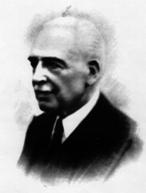“The only son of Emile Lasalle-Serbat and Marie Garçon, he came from the industrial middle classes in northern France. His family’s wealth undoubtedly came from his grandfather, Louis Lasalle-Serbat, a chemist and the inventor of “”Serbat putty””.
As a child, Louis Serbat left the Nord region of France for Béarn: “”for reasons of health and preference””, according to Adrien Carlier, his family moved to Pau where his father had a property. He successfully passed the exam to enter the Ecole des Chartes and graduated as an archivist-palaeographer.
He then devoted his life to study and his collections. He became an “”informed amateur, who did not collect simply in order to amass rare objects but with the intention of studying each piece he found, with the fervour of a biologist”” (A. Carlier).”


